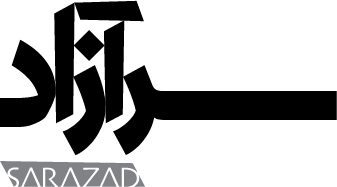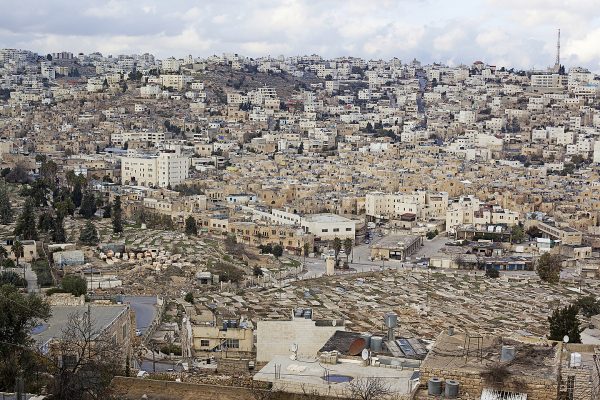Living as we did, on the edge, we developed a particular way of seeing reality.
-bell hooks
You can easily overlook an image depicting a cityscape. This wide shot, however, with its details galore, compels us to engage with a narrative of occupation. This wide view of Al-Khalil offers a lot of visual evidence regarding the disruptive impact of Israeli intrusion on the heart of this historic city. To call the city “historic” is not merely to say it is old; Al-Khalil has stand witness to many an ideological conflict, with countless stories, remembered or forgotten, etched into its fabric. The fight is over the narrative of history, new stories are inscribed by the occupier in order to erase the heritage of the residents. In this shot, the divided identity of the city becomes evident, division like the very name of the city: Khalil/Hebron.
Examining the artist’s caption for this image reveals further unseen details:
“A view of the Hill of Al-Rahme. Jewish settlers have unrestricted access to al-Shuhada Street, while Palestinian access is limited to residents registered at the Israeli army checkpoint, with mandatory annual registration renewal. All Palestinian shops on al-Shuhda Street and in the Hay Al-Yahud/Avraham Avinu settlement area have been closed by order of the Israeli army. Most Palestinian homes here are abandoned due to ongoing harassment by the Israeli army and settlers.”
Following the Oslo Accords in 1995 and Hebron Agreement in 1997, certain Palestinian cities fell under the control of the Palestinian Authority. Still, Hebron was divided: one part is governed by the Palestinian Authority while the other remains under Israeli occupation.
In her collection called Occupation, Ahlam Shibli addresses the destruction of Palestinian livelihoods in Hebron and other occupied territories by the Israeli colonial regime and Zionist settlers. Each photograph in this series reflects the violence inflicted by the Israeli government on the people of Hebron and occupied Palestine. In the thirty-two images that Shibli has taken in Hebron over a span of two years, she captures the marks the occupation has left on the city’s architecture.
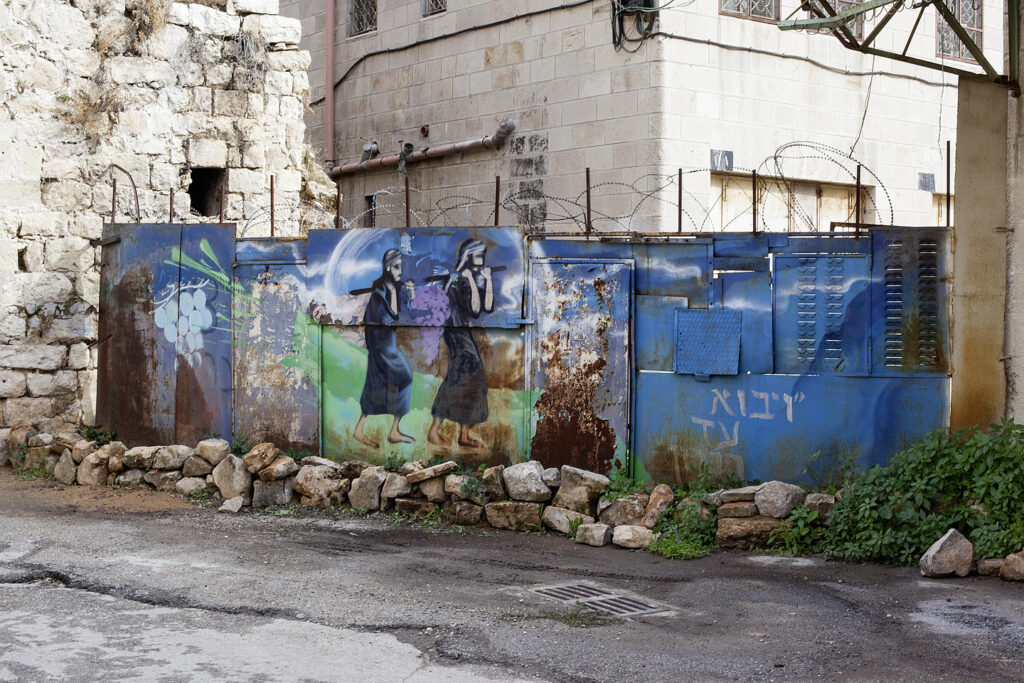
After the image with the wide view of the city, we shift to an image depicting the exterior of a Palestinian school. Here, a mural serves as an ideological icon justifying the occupation of Palestinian lands. The mural depicts two men carrying a large cluster of grapes, alluding to a biblical narrative used to claim that the Israelites were Canaan’s original inhabitants. What is present— what is not intended to be seen—is revealed. The details convey the emotional depth of the artist’s protest against the atrocities inflicted by the occupation. Elements such as the rows of stones set in front of the building and the barbed wire above the gate draw our attention to the underlying roots of occupation more than the ideology behind the mural as they expose the ways Palestinians protect their public spaces from settlers. As Shibli expresses in the statement accompanying this collection:
“It is as if the occupation succeeded in occupying them as well, or as if the Palestinians internalise the effects of the imposed obstacles by creating more obstacles.”
Shibli focuses simultaneously on the external and the internal, capturing both the obstruction of movement and the disruption of daily life caused by the occupying government, as well as the harassment of Palestinians by settlers. This dual pressure has forced residents to dig trenches in their homes and rely on crude tools within their personal spaces.
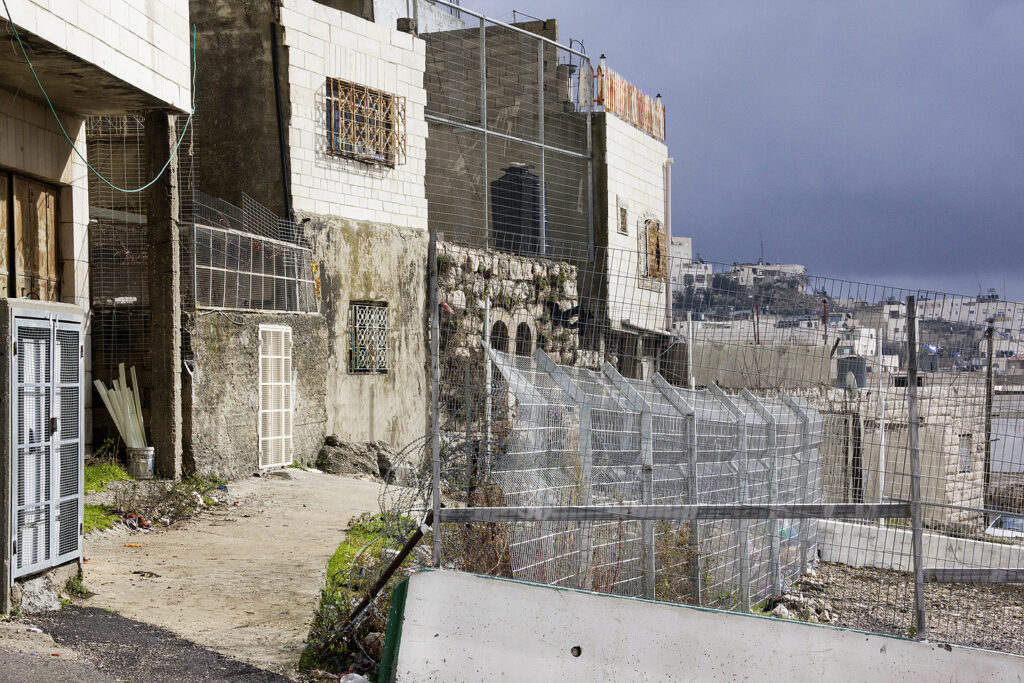
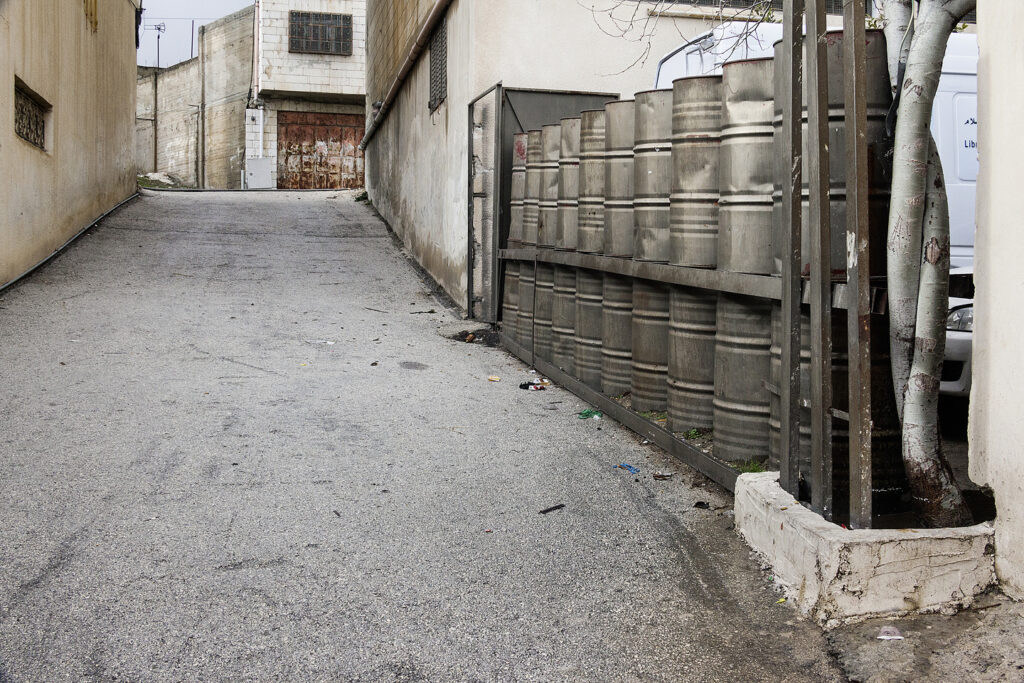
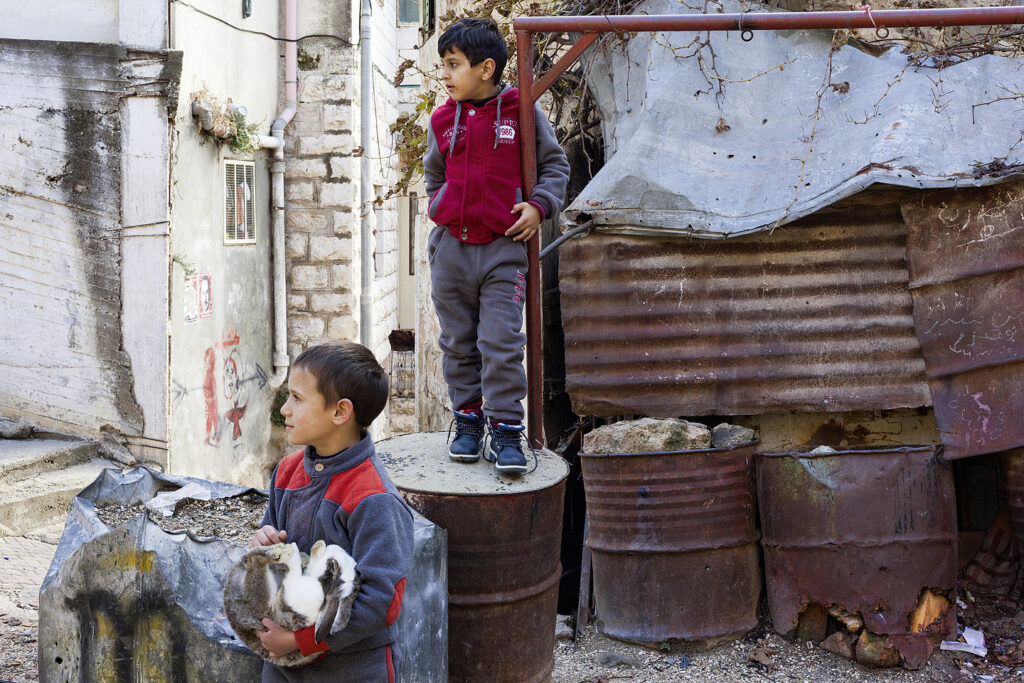
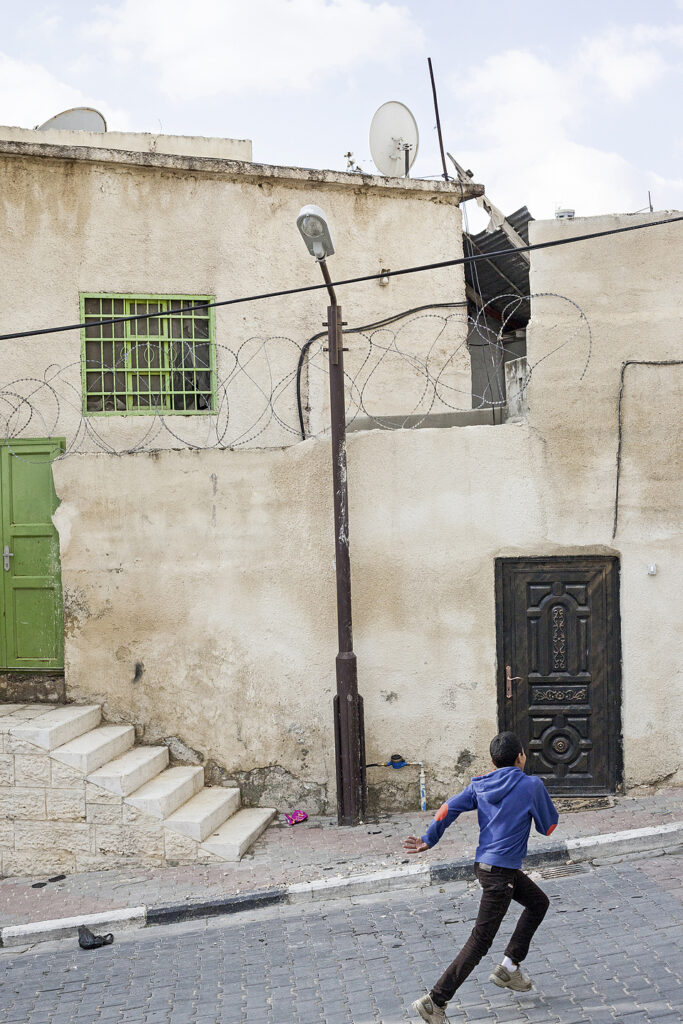
In her other collections, Shibli explores themes of home and belonging, documenting the lives of Arabs in villages occupied by Israel. Her photographs invite a reading aligned with a deeper understanding of home and settlement.
How can one speak of a house that has been destroyed, along with all its memories? Is it possible to move beyond mourning and not fall into the trap of nostalgia? How can we undertake such task so that addressing the idea of home becomes a form of resistance, simultaneously highlighting the destruction of a homeland and the struggle against that destruction. Art critic, Christian Höller, observes that Shibli’s work marks both the loss of home and the defiance against this loss. The visual elements in her works complicate the concept of home, particularly within the Palestinian landscape, where the idea of home resists a straightforward definition. In this way, the photographs of this Palestinian artist suggest a layered ambiguity: the presence and simultaneous absence of home for Palestinians like her.[1]
Each of Shibli’s collections is rooted in her personal experience, experiences drenched in the impacts of colonialism and violence. Her work addresses displacement, humiliation, identity, and migration with her caustic politically-charged perspective. Shibli’s documentary style diverges sharply from the conventional approach often taken with similar themes. While many works in this genre lean toward a journalistic style, aiming for immediate impact, Shibli’s work is quiet, narrating in silence and from a distance—all the while that she stands at the heart of the story. Her photographs resist integration into the dominant discourse of mass media by rejecting the immediacy and straightforwardness typical of news imagery. Indeed, one can say Shibli’s photography fosters a dialogue with people rather than serving as mere visual documentation.
Jean-François Chevrier, critic, curator, and art historian, also considered Shibli’s works to be geared towards understanding the present and outside of the sensationalism of news media, which often dramatises information as part of today’s “fake news” landscape.[2] Shibli does not conform to conventional beauty standards. Her photographs bring a nuanced focus to everyday life, reshaping our understanding of less seen communities from how the media usually depicts them. Her work bridges the gap between the immediacy of documentary—with its inherent sympathetic engagement—and the critical distance required for deeper reflection. While photojournalists worldwide rushed to document the Israeli-Palestinian conflict, Ahlam Shibli responded to the present moment by exploring the roots of the conflict the contemplative stillness of her images. By moving between interior and exterior spaces, past and present, Shibli’s photography transcends traditional modes of documenting the Palestinian struggle for survival.
In fact, there is a difference between a naked image—one that serves solely as a straightforward record or testimony—and an image that carries the subtle strains of artistry. By “naked image,” we refer to news photos that adhere to established conventions and principles, aiming simply to document events as they occurred. These images assert an absolute truth and posing as historical documents, they do not leave any room for interpretation. Naked images do not present any challenges; they involve no reconfiguration and lack any particular playfulness or complexity. Produced for pure, immediate presence, they exist without implied meaning.
Shibli’s works can be understood as critical interventions. Generally, critical work aims to question and raise awareness of mechanisms of domination within society—mechanisms often resistant to scrutiny and primarily concealed. In documentary photography, critical works highlight the politics of visibility and representation, challenging traditional documentary practices. Such works depict subjects and experiences rendered absent in the images produced by institutions of power. Dominant discourses and systems of representation obscure certain realities, but critically engaged photographers discern these hidden elements and invite their audiences to see them as well.
Shibli’s work seeks to expose a prohibition on historical representation—a restriction established by Israel and perpetuated by mainstream media. Her photographs can be viewed as a response to the need to reveal what has been forbidden. Shibli comments, “Photography is the act of revealing and concealing simultaneously”.[3] This simultaneous act of revealing and concealing occurs within a single type of image rather than through separate categories. This contrasting approach creates a visual interplay that resists straightforward interpretation, inviting a more nuanced engagement with the images.
As Höller notes, the interplay of revealing and concealing in Shibli’s work focuses on those people and subjects that generally escape the oversaturated gaze of mainstream media. Her photographs resist any spectacle, opting instead for a different approach to portrayal. Shibli’s practice brings hidden subjects into view—or, more precisely, makes them visible—seeking to dismantle a particular regime of representation irresponsibly perpetuated by mass media. This raises a central question: how can a photograph simultaneously reveal what is hidden and obscure what is visible? Part of the answer lies in the specific focus of Shibli’s photographic collections: the lived conditions of the Palestinian people (Höller 2013, 107). Shibli focuses on places which are absent from official Israeli maps, realities and conditions that are unacknowledged or unrecognised. Yet, through her own particular way, shibli destabilises any fixed interpretation of the invisible or the absent, depicting both the “existent” and the “formal” with equal emphasis (Ibid).
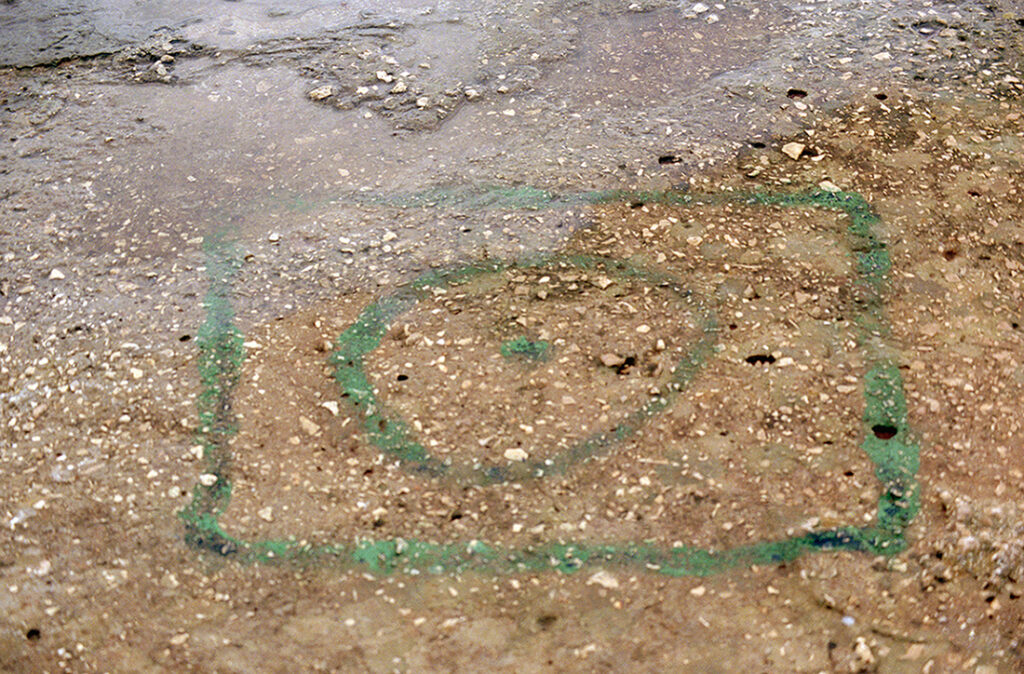
A clear example of this is Shibli’s Unrecognised Collection. In this series, Shibli recounts the story of the Palestinian Bedouin village, Arab al-N’aim, which was established in the 1930s on Jabal Abu-Qarad (Tick Mountain) in Galilee. In the decade following Israel’s establishment, the mapping team of the Israel Lands Authority recorded only parts of the village agricultural land and omitted its stone houses from official records. This exclusion relegated dozens of villages to an illegal or unrecognised status. The late Palestinian artist, Kamal Boullata, rightfully observes that by capturing this contradiction in her images, Shibli reveals a historical narrative that remains hidden from attention of the Israeli public space.[4] Shibli’s work narrates discontinuities and ruptures in ways that resembles Palestinian’s own methods of resistance against invisibility.
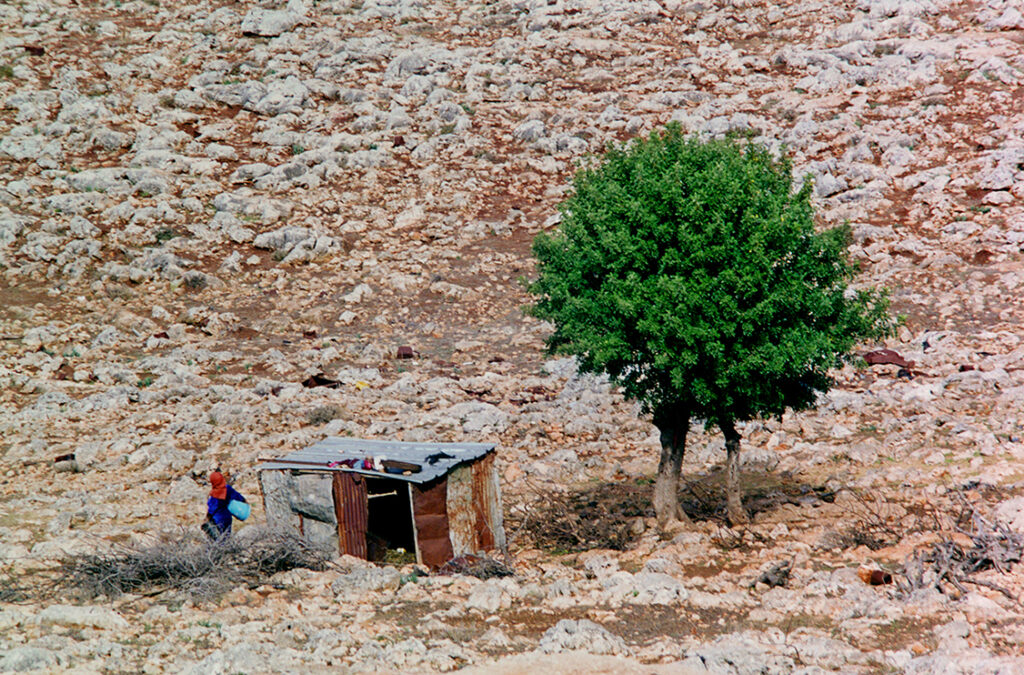
As mentioned, Shibli’s images not only make things visible, they also conceal some other things. Rancière notes that “the complaint is then no longer that images conceal secrets which are no longer such to anyone, but, on the contrary, that they no longer hide anything.”[5] Shibli engages in this paradox in her own way. Boullata, whose lived experience resonates with Shibli’s images, suggests that Shibli inevitably developed her own photographic language to penetrate the unseen and convey her people’s resilience. She intentionally positions herself at the threshold between the visible and the concealed, striving to view the connections between past and present through a fresh lens.[6] Her work challenges the stereotypes that reduce the subjects of her images to representations of weakness and inferiority. In these photographs, the life conditions, demeanour, and presence of the people depicted extend beyond conventional frameworks of representation.
Shibli’s work does not revisit the question of ethics in the conventional sense. In contrast to popular portrayals of Palestine, Shibli does not offer a utopian vision of peace. While her work operates on an epic scale, she avoids framing her images around dramatic or monumental events, refraining from making hasty moral judgments about the people depicted. Instead, the defining feature of Shibli’s works is a quiet, patient resistance against prevailing conditions. In her images, the background elements appear to exert complete control over the composition, with people portrayed confidently in the face of adversity. Shibli shows life and vitality in the face of harsh conditions, all the while that She seeks to challenge and reframe the stigma of invisibility that these subjects often endure.[7]
Although Shibli’s works leave no doubt about the profound destruction of Palestinian livelihoods, their purpose is more to represent the constant, pervasive presence of occupation than to expose its causes or mechanisms. Her photographs do not focus on criminals, violent scenes, or oppressive military installations. Instead, they capture moments of calm and everyday life which often follow acts of violence. As such, her collection may not initially seem aligned with the struggle against colonial power. However, there is no neutrality in Shibli’s gaze. She consistently presents her personal perspective. In a context of armed conflict and the occupation of Palestinian land, any claim to neutrality is unequivocally untenable. Shibli’s work occupies the space between the most intimate and the most alien, at a threshold where viewers are invited to reflect on the meaning of the images. The moments Shibli documents are echoes of collective experiences_ experiences shared by every Palestinian and embedded in their collective memory.
Resources:
Rancière, Jacques. 2007. The Future of the Image. Verso.
Reinhard Braun and Ahlam Shibli, ‘Ahlam Shibli: Objecting to Imposed Invisibility’, Camera Austria,
no.114, June 2011.
Höller, Christian. 2013. Walls, No Bridges: The Relation between Revealing and Disguising in Ahlam Shibli’s Photographic Practice. Translated from the German by Helen Ferguson. Afterall: A Journal of Art, Context and Enquiry. Issue 32. 106-117.
Boullata, Kamal 2003. Cassandra and the Photography of the Invisible, ahlamshibli.
Chevrier, Jean-François. 2017. Ahlam Shibli, documenta14.
[1] Höller 2013, 107
[2]Chevrier, 2017
[3] Braun and Shibli, 2011, 19
[4] Boullata, 2003
[5] Rancière,2007, 73
[6] Boullata, 2003
[7] Höller, 2013, 107
